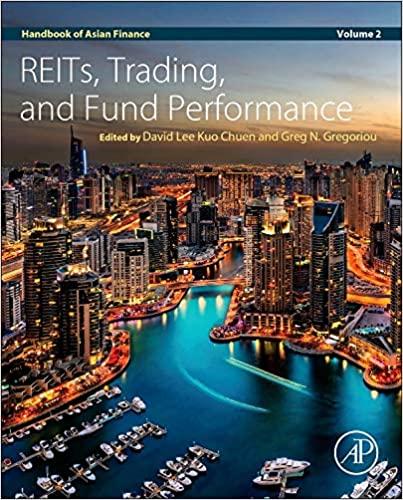Question
Problem 3-2 Timberline Inc. had the following current accounts last year. ($000) Beginning Ending Beginning Ending Cash $ 175 $ 238 Accounts payable $205 $182
Problem 3-2
Timberline Inc. had the following current accounts last year. ($000)
| Beginning | Ending | Beginning | Ending | ||||||
| Cash | $ 175 | $ 238 | Accounts payable | $205 | $182 | ||||
| Accounts receivable | 1,456 | 2,207 | Accruals | $95 | 83 | ||||
| Inventory | 943 | 786 | |||||||
| Current assets | $2,574 | $3,231 | Current liabilities | $300 | $265 | ||||
In addition, the company had sales revenues of $9,495,000 and costs and expenses (including interest and tax) of $7,580,000. Depreciation of $1,485,000 is included in the cost and expense figures.
Construct a statement showing Timberline's Cash from Operating Activities, including a detail of changes in balance sheet accounts.
| Cash Flows From Operating Activities. | |||||||||||||||||||||||||||||||||||||||||||||||||||||||||||||||||||||||||||||||||||||||||||||||||||||||||||||||||||||||||||||||||||||||||||||||||||||||||||||||||||||||||||||||||||||||||||||||||||||||||||||||||||||||||||||||||||||||||||||||||||||||||||||||||||||||||||||||||||||||||||||||||||||||||||||||||||||||||||||||||||||||||||||||||||||||||||||||||||||||||||||||||||||||||||||||||||||||||||||||||||||||||||||||||||||||||||||||||||||||||||||||||||||||||||||||||||||||||||||||||||||||||||||||||||||||||||||||||||||||||||||||||||||||||||||||||||||||||||||||||||||||||||||||||||||||||||||||||||||||||||||||||||||||||||||||||||||||||||||||||||||||||||||||||||||||||||||||||||||||||||||||||||||||||||||||||||||||||||||||||||||||||||||||||||||||||||||||||||||||||||||||||||||
| Net Income | $ | ||||||||||||||||||||||||||||||||||||||||||||||||||||||||||||||||||||||||||||||||||||||||||||||||||||||||||||||||||||||||||||||||||||||||||||||||||||||||||||||||||||||||||||||||||||||||||||||||||||||||||||||||||||||||||||||||||||||||||||||||||||||||||||||||||||||||||||||||||||||||||||||||||||||||||||||||||||||||||||||||||||||||||||||||||||||||||||||||||||||||||||||||||||||||||||||||||||||||||||||||||||||||||||||||||||||||||||||||||||||||||||||||||||||||||||||||||||||||||||||||||||||||||||||||||||||||||||||||||||||||||||||||||||||||||||||||||||||||||||||||||||||||||||||||||||||||||||||||||||||||||||||||||||||||||||||||||||||||||||||||||||||||||||||||||||||||||||||||||||||||||||||||||||||||||||||||||||||||||||||||||||||||||||||||||||||||||||||||||||||||||||||||||||
| Depreciation | |||||||||||||||||||||||||||||||||||||||||||||||||||||||||||||||||||||||||||||||||||||||||||||||||||||||||||||||||||||||||||||||||||||||||||||||||||||||||||||||||||||||||||||||||||||||||||||||||||||||||||||||||||||||||||||||||||||||||||||||||||||||||||||||||||||||||||||||||||||||||||||||||||||||||||||||||||||||||||||||||||||||||||||||||||||||||||||||||||||||||||||||||||||||||||||||||||||||||||||||||||||||||||||||||||||||||||||||||||||||||||||||||||||||||||||||||||||||||||||||||||||||||||||||||||||||||||||||||||||||||||||||||||||||||||||||||||||||||||||||||||||||||||||||||||||||||||||||||||||||||||||||||||||||||||||||||||||||||||||||||||||||||||||||||||||||||||||||||||||||||||||||||||||||||||||||||||||||||||||||||||||||||||||||||||||||||||||||||||||||||||||||||||||
| Net change in current accounts | |||||||||||||||||||||||||||||||||||||||||||||||||||||||||||||||||||||||||||||||||||||||||||||||||||||||||||||||||||||||||||||||||||||||||||||||||||||||||||||||||||||||||||||||||||||||||||||||||||||||||||||||||||||||||||||||||||||||||||||||||||||||||||||||||||||||||||||||||||||||||||||||||||||||||||||||||||||||||||||||||||||||||||||||||||||||||||||||||||||||||||||||||||||||||||||||||||||||||||||||||||||||||||||||||||||||||||||||||||||||||||||||||||||||||||||||||||||||||||||||||||||||||||||||||||||||||||||||||||||||||||||||||||||||||||||||||||||||||||||||||||||||||||||||||||||||||||||||||||||||||||||||||||||||||||||||||||||||||||||||||||||||||||||||||||||||||||||||||||||||||||||||||||||||||||||||||||||||||||||||||||||||||||||||||||||||||||||||||||||||||||||||||||||
| Cash flow from operating activities
Problem 3-4 Fitch Inc's financial statements are as follows:
Fitch also sold stock for $2.5 million and paid dividends of $3.1 million. No fixed assets were retired during the year. (Hint: That implies fixed asset purchases and depreciation are the only changes in gross and accumulated depreciation accounts.) Construct Fitch's statement of cash flows for 20X1. Enter your answers in thousands. For example, an answer of $1.2 million should be entered as 1200, not 1200000. Use a minus sign, to indicate any decreases in cash or cash outflows.
Problem 3-6 Fred Klein started his own business recently. He began by depositing $5,000 of his own money (equity) in a business account. Once he'd done that his balance sheet was as follows.
During the next month, his first month of business, he completed the following transactions. (All payments were made with checks out of the bank account.) Purchased $4,000 worth of inventory, paying $1,500 down and owing the vendor the remainder. Used $400 of the inventory in making product. Paid employees' wages on the last day of the month of $1,100. Sold all the product made in the first month on credit for $3,000. Paid rent of $1,450. Construct a balance sheet for Fred's business at the end of its first month. (Hint: Fred's business has only current assets, current liabilities, and an equity account. Calculate the ending balance in each of the current accounts from the information given. The ending equity account balance will be the difference between the current assets and liabilities at month end.) Enter all amounts as positive numbers.
Construct Fred's income statement. (Hint: Fred's revenue is the credit sale. His costs/expenses consist of the inventory used in product sold plus the things other than inventory for which he wrote checks. Ignore taxes.)
Construct Fred's statement of cash flows for the month. (Hint: Fred's beginning balance sheet has only two accounts, cash and equity, each with a $5,000 balance. All other accounts open with zero balances.) Use a minus sign, to indicate any decreases in cash or cash outflows. If an amount is zero, enter "0".
Is Fred's business profitable in an accounting sense? In a cash flow sense? The input in the box below will not be graded, but may be reviewed and considered by your instructor.
Can the business fail while making a profit? How might that happen in the next month or so? The input in the box below will not be graded, but may be reviewed and considered by your instructor. Problem 3-7 The Blandings Home Construction Company purchased a new crane for $350,000 this year. It sold the old crane for $100,000. At the time it had a net book value of $20,000. Assume any profit on the sale of old equipment is taxed at 23%. These were the only transactions that affected investing activities this year. Construct the Cash Flow from Investing Activities section of the statement of cash flows to concisely convey the maximum information to readers of the company's financial statements. Use a minus sign, to indicate any decreases in cash or cash outflows.
| $
| ||||||||||||||||||||||||||||||||||||||||||||||||||||||||||||||||||||||||||||||||||||||||||||||||||||||||||||||||||||||||||||||||||||||||||||||||||||||||||||||||||||||||||||||||||||||||||||||||||||||||||||||||||||||||||||||||||||||||||||||||||||||||||||||||||||||||||||||||||||||||||||||||||||||||||||||||||||||||||||||||||||||||||||||||||||||||||||||||||||||||||||||||||||||||||||||||||||||||||||||||||||||||||||||||||||||||||||||||||||||||||||||||||||||||||||||||||||||||||||||||||||||||||||||||||||||||||||||||||||||||||||||||||||||||||||||||||||||||||||||||||||||||||||||||||||||||||||||||||||||||||||||||||||||||||||||||||||||||||||||||||||||||||||||||||||||||||||||||||||||||||||||||||||||||||||||||||||||||||||||||||||||||||||||||||||||||||||||||||||||||||||||||||||
Step by Step Solution
There are 3 Steps involved in it
Step: 1

Get Instant Access to Expert-Tailored Solutions
See step-by-step solutions with expert insights and AI powered tools for academic success
Step: 2

Step: 3

Ace Your Homework with AI
Get the answers you need in no time with our AI-driven, step-by-step assistance
Get Started


